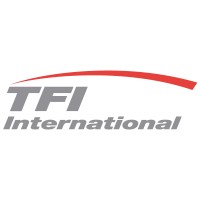
TFI International Inc. Company Cyber Security Posture
tfiintl.comTFI International is a North American leader in the transportation and logistics industry, operating across the United States, Canada and Mexico through its subsidiaries. TFI International creates value for shareholders by identifying strategic acquisitions and managing a growing network of wholly owned operating subsidiaries. Under the TFI International umbrella, companies benefit from financial and operational resources to build their businesses and increase their efficiency. TFI International companies service the following reportable segments: · Less-Than-Truckload · Truckload · Logistics TFI International Inc. is publicly traded on the New York Stock Exchange and the Toronto Stock Exchange under the symbol TFII. For more information, visit http://www.tfiintl.com.
TII Company Details
tfi-international-inc.
456 employees
34090.0
none
Transportation/Trucking/Railroad
tfiintl.com
Scan still pending
TFI_8177204
In-progress
Between 200 and 800
This score is AI-generated and less favored by cyber insurers, who prefer the TPRM score.
 TII Global Score
TII Global Score.png)

TFI International Inc. Company Scoring based on AI Models
| Model Name | Date | Description | Current Score Difference | Score |
|---|---|---|---|---|
| AVERAGE-Industry | 03-12-2025 | This score represents the average cybersecurity rating of companies already scanned within the same industry. It provides a benchmark to compare an individual company's security posture against its industry peers. | N/A | Between 200 and 800 |
TFI International Inc. Company Cyber Security News & History
| Entity | Type | Severity | Impact | Seen | Url ID | Details | View |
|---|
TFI International Inc. Company Subsidiaries

TFI International is a North American leader in the transportation and logistics industry, operating across the United States, Canada and Mexico through its subsidiaries. TFI International creates value for shareholders by identifying strategic acquisitions and managing a growing network of wholly owned operating subsidiaries. Under the TFI International umbrella, companies benefit from financial and operational resources to build their businesses and increase their efficiency. TFI International companies service the following reportable segments: · Less-Than-Truckload · Truckload · Logistics TFI International Inc. is publicly traded on the New York Stock Exchange and the Toronto Stock Exchange under the symbol TFII. For more information, visit http://www.tfiintl.com.
Access Data Using Our API

Get company history
.png)
TII Cyber Security News
Disappointing Q1 for TFI International as US LTL drags down results
The stock of TFI International took a significant downturn in post-close trading Wednesday after earnings that again can only be described as disappointing.
Quebec pension fund rebukes trucking firm TFI for move to U.S.
Canadian trucking and logistics company TFI International said it will move its headquarters to the U.S., earning criticism from one of its ...
TFI International CEO Says U.S. Domicile Scrapped After Worries From American Investors
OTTAWA—TFI International Chief Executive Officer Alain Bédard said he had scrapped, for now, plans to move the logistics company's headquarters ...
TFI International to Retain Canadian Corporation Status
MONTREAL, Feb. 24, 2025 (GLOBE NEWSWIRE) -- TFI International Inc. (NYSE and TSX: TFII), a North American leader in the transportation and ...
TFI International Inc. (TSE:TFII) Director Buys C$220,855.20 in Stock
TFI International Inc, together with its subsidiaries, provides transportation and logistics services in the United States and Canada. The ...
Business Brief: The ultimate fraud machine
Conservative platform aims to sharply reduce government spending on AI · Here, reporter Sara, experiences an active assailant assault drill, ...
TFI International Inc. (TFII) Misses Q4 Earnings and Revenue Estimates
TFI International (TFII) delivered earnings and revenue surprises of -25.16% and 6.89%, respectively, for the quarter ended December 2024.
TFI International Inc. Acquires 1,108 Shares of TFI International Inc. (TSE:TFII) Stock
The stock had a trading volume of 218,660 shares, compared to its average volume of 235,190. The company's 50-day moving average is C$175.84 and ...
TFI International Inc (TFII) Q4 2024 Earnings Call Highlights: Navigating Challenges with ...
Revenue Before Fuel Surcharge: $1.8 billion, up 9% year-over-year. Operating Income: $160 million, down from $198 million.

TII Similar Companies

Swift Transportation
Swift Transportation is the largest full-truckload motor carrier in North America. Based in Phoenix, Arizona, the Swift terminal network includes over thirty full-service facilities in the United States and Mexico. Swift provides a full line of service solutions, including linehaul, flatbed, intermo
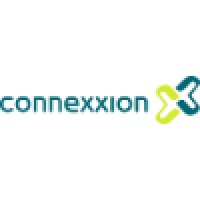
Connexxion
Connexxion wil de beste keuze zijn op het gebied van regionaal personenvervoer in Nederland. Met zorg brengen wij mensen op hun bestemming met toegankelijk, duurzaam en veilig vervoer! Wij willen mobiliteit voor iedereen toegankelijk en beschikbaar houden. Want wij geloven dat mobiliteit essentieel
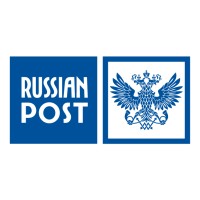
Russian Post
Russian Post is one of the largest internationally operating logistics groups and the national postal service provider of the Russian Federation. We offer a broad and multimodal portfolio of domestic and international e-commerce, parcel shipping and logistics solutions, by road, sea and air. With a

SBB CFF FFS
We shape the mobility of the future – simple, personal, connected. SBB’s comprehensive service contract allows us to offer a wide range of exciting careers in all areas of business. Thanks to this variety, many different career paths are possible, which we support through education and training o
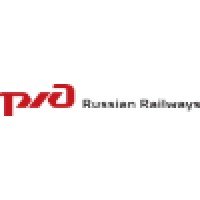
Russian Railways
Russian Railways is Russia’s leading railway company and one of the largest companies in the global transport sector. The Company is a natural monopoly and fully owned by the Russian Federation. Our primary goal is to meet the state’s rail transport and employment needs, and to provide services to p
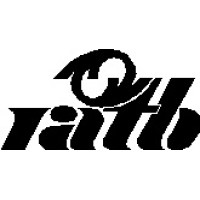
RATB
Collective Transport Company from Bucharest It operates a complex network of buses, trams and trolleybuses – in fact, all public transport except the Bucharest Metro, which is managed by Metrorex. While owned entirely by the City Council, RATB is an autonomous company. The RATB transport servi

Frequently Asked Questions
Explore insights on cybersecurity incidents, risk posture, and Rankiteo's assessments.
TII CyberSecurity History Information
How many cyber incidents has TII faced?
Total Incidents: According to Rankiteo, TII has faced 0 incidents in the past.
What types of cybersecurity incidents have occurred at TII?
Incident Types: The types of cybersecurity incidents that have occurred include .
Incident Details
What are the most common types of attacks the company has faced?
Additional Questions
What Do We Measure?
















Every week, Rankiteo analyzes billions of signals to give organizations a sharper, faster view of emerging risks. With deeper, more actionable intelligence at their fingertips, security teams can outpace threat actors, respond instantly to Zero-Day attacks, and dramatically shrink their risk exposure window.
These are some of the factors we use to calculate the overall score:
Identify exposed access points, detect misconfigured SSL certificates, and uncover vulnerabilities across the network infrastructure.
Gain visibility into the software components used within an organization to detect vulnerabilities, manage risk, and ensure supply chain security.
Monitor and manage all IT assets and their configurations to ensure accurate, real-time visibility across the company's technology environment.
Leverage real-time insights on active threats, malware campaigns, and emerging vulnerabilities to proactively defend against evolving cyberattacks.




